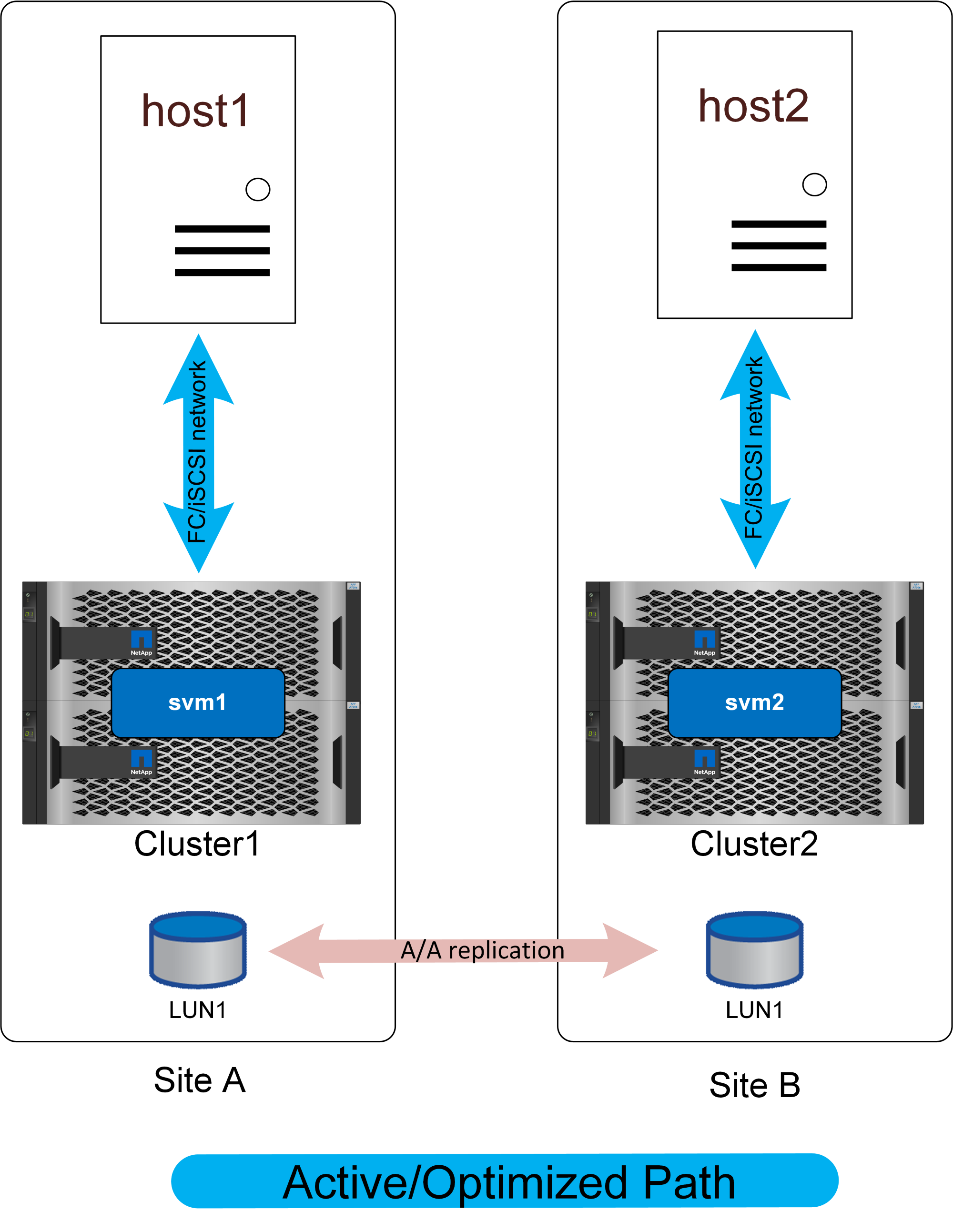Nonuniform access
 Suggest changes
Suggest changes


Nonuniform access networking means each host only has access to ports on the local storage system. The SAN is not extended across sites (or failure domains within the same site).

The primary benefit to this approach is SAN simplicity - you remove the need to stretch a SAN over the network. Some customers don't have sufficiently low-latency connectivity between sites or lack the infrastructure to tunnel FC SAN traffic over an intersite network.
The disadvantage to nonuniform access is that certain failure scenarios, including loss of the replication link, will result some hosts losing access to storage. Applications that run as single instances, such as a non-clustered database that is inherently only running on a single host at any given mount would fail if local storage connectivity was lost. The data would still be protected, but the database server would no longer have access. It would need to be restarted on a remote site, preferably through an automated process. For example, VMware HA can detect an all-paths-down situation on one server and restart a VM on another server where paths are available.
In contrast, a clustered application such as Oracle RAC can deliver a service that is simultaneously available at two different sites. Losing a site doesn't mean loss of the application service as a whole. Instances are still available and running at the surviving site.
In many cases, the additional latency overhead of an application accessing storage across a site-to-site link would be unacceptable. This means that the improved availability of uniform networking is minimal, since loss of storage on a site would lead to the need to shut down services on that failed site anyway.

|
There are redundant paths through the local cluster that are not shown on these diagrams for the sake of simplicity. ONTAP storage systems are HA themselves, so a controller failure should not result in site failure. It should merely result in a change in which local paths are used on the affected site. |


